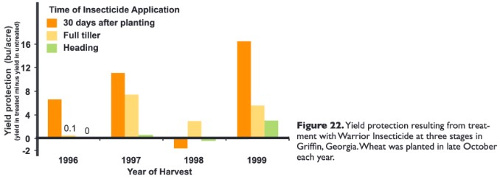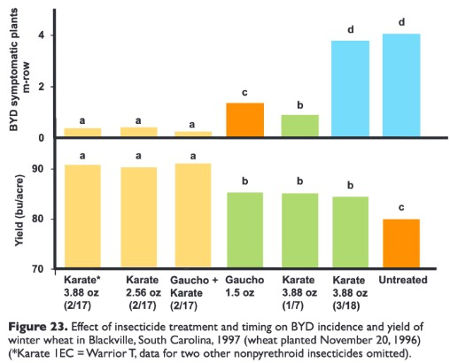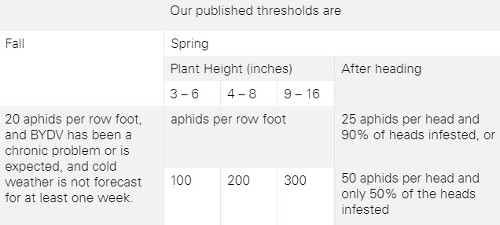
Fig. 2. Data from “Barley Yellow Dwarf in Small Grains in the Southeast” https://entomology.ca.uky.edu/files/efpdf1/ef150.pdf

Fig. 3. Data from “Barley Yellow Dwarf in Small Grains in the Southeast” https://entomology.ca.uky.edu/files/efpdf1/ef150.pdf
The greenbug can be a species of concern due to its direct impacts on yield. They can inject a toxin in their saliva that can have big consequences for the plant. If this species is present, your decision to spray just got easier.

If you have greenbug (characteristic is the green stripe running down the back), then applying these thresholds is a no-brainer. Furthermore, if you’re worried about cereal leaf beetle (where has that thing been for the past six or seven years?), you might have more reason to spray- pyrethroid residual is great for this pest. If it’s another aphid species, consider these things. First, positive returns for a spray are greatest in years with good yield potential (a lot of wheat looks good to me this year) and high commodity prices (definitely not). Second, drive down over wheat after jointing can reverse any positive impacts you might have with an insecticide spray, not to mention the cost of the trip across the field. Thirdly, in my experience greenbug is not a common species in the Southeast.
In conclusion, I would wager that most fields that are sprayed will not preserve yield at levels that will pay for cost of the spray this time of the year.
Source: ncsu.edu